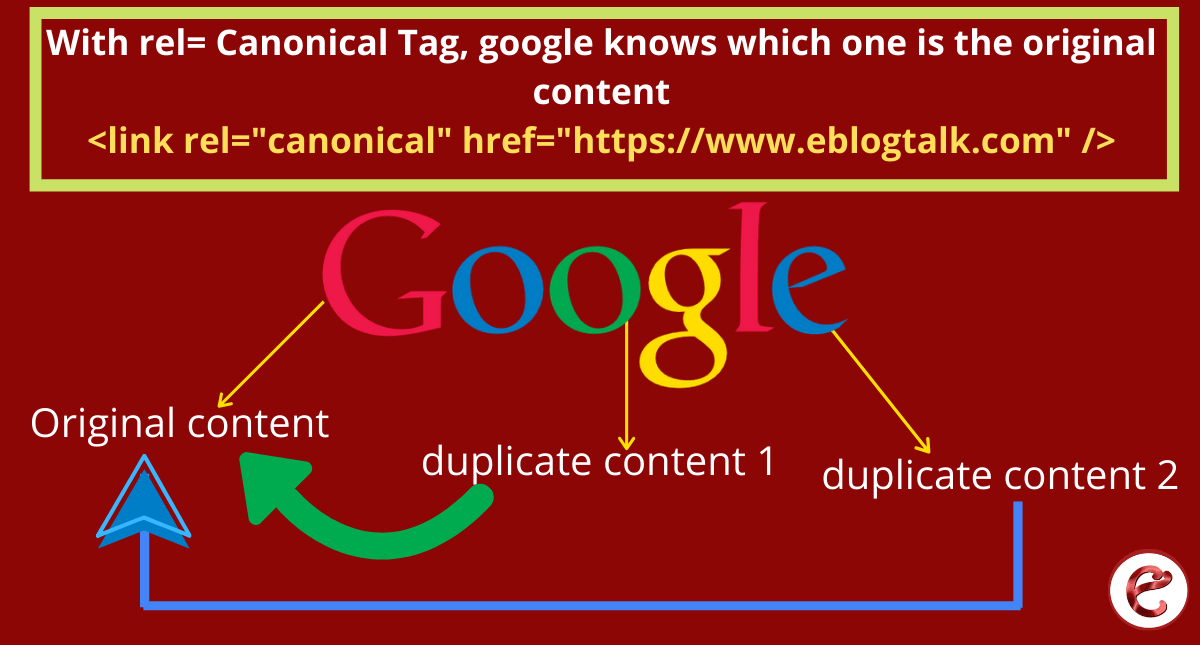What is a canonical tag?
canonicalization 2020: A canonical tag is used to tell the search engines that a specific URL represents the master copy of a page. Mainly, canonical tag prevents the problems caused by identical or “duplicate” content appearing on multiple URLs. In simple words, the canonical tag tells the search engine which version of a URL should appear in the search results page.

Why does canonicalization matter?
Duplicate content is the main complicated factor of using the canonicalization. When search engines crawl the various URLs with similar content, then it causes a number of SEO problems. First, when the crawlers wade through the many duplicate contents, then it may miss some of the unique content. Second, it also affects the ranking of the website or that content ranking. Sometimes, the search engines may pick the wrong URL as the original. Here the canonicalization helps in controlling the duplicate content.
Read more: How to add Google Tag Manager in WordPress. Click on the below link:
The problem with Content URLs
The problem is that as humans, we tend to think of a page as a concept, such as the homepage. But for the search engines, every unique URL is a separate page.
Let’s have a look on the given URLs:
- http://www.example.com
- https://www.example.com
- http://example.com
- http://example.com/index.php
- http://example.com/index.php?r…
For humans all the above URLs represent the single page. But in the case of the crawler, every single URL represents the different page. Even there are 3 copies of the homepage in the limited example.
Nowadays, content management systems (CMS) are very common for blogging, ecommerce websites. Many CMS websites automatically add the tags, allowing multiple paths to the same URLs. You may have thousands of duplicate URLs on your website and you may not even realize it.
Best practices of canonical tag
It’s really tricky to handle the duplicate content issues, but here are a few important things to consider while using the canonical tag:
1. Homepage Canonicalization
You might have noticed the homepage URL duplication and it’s very common. People may link to the homepage in many different ways that you can’t control. It’s a good idea to put a canonical tag on your homepage to prevent it from duplication.
2. Self-referential Canonical tags
It’s fine if a canonical tag pointing to the current URL of the website. If URLs A, B, and C are duplicates and A is the canonical version, it’s ok to put the tag pointing to A on URL A. It’s a very common mistake among users.

3. Spot-check the dynamic canonical tags
Sometimes, a few bad codes cause a website to write a different canonical tag for every version of the URL. So, make sure to check the URLs, especially on e-commerce and CMS websites.
4. Avoid mixed signals
If you send the mixed signal then the search engines may avoid or take it incorrectly. In simple words, don’t canonicalize page A > page B and then page B > page A.
Likewise, don’t canonicalize page A > page B and then redirect page B > page A.
Avoid chain canonical tags such as A>B, B>C, C>D.
By using this mixed signal you are forcing search engines to make a bad choice. So, try to send the clear signals to the search engine.
Canonical tags vs. 301 redirects
One most common doubt is whether canonical tags pass the link equity (Authority) like 301 redirects. And the answer is no, these two create totally different results for the search crawlers and visitors.
If you redirect Page A> Page B, then the users will land to Page B automatically and never see Page A.
And if canonical Page A> Page B, then the search engine will know that Page B is canonical, and the users will visit both the URLs.
How to Audit Your Canonical Tags (Canonicalization) for SEO
There are a number of things for checking while auditing the canonical tags. Here is the list:
- Does the page have a canonical tag?
- Does the canonical point to the right page?
- Are the pages crawlable and indexable?
Sometimes the canonical URL is either blocked by robots.txt or is set to “noindex”. This may send mixed signals to the search engines. Below are a few ways to audit your canonical tags (canonicalization).
1. View-source (Ctrl + U)
In most browsers, you can right click to view-source, or simply type https://www.eblogtalk.com into the address bar. And then search for the canonical tag in the head by (ctrl + F) and type canonical tag.

2. Use the MozBar
MozBar is a free SEO tool that will easily show the canonical tag on the given website page. You only have to click on the Page Analysis tab, then click on the “General Attributes” to view the canonical information.

If you liked this article, then please subscribe to our YouTube Channel for WordPress video tutorials. You can also find us on Twitter and Facebook. Share eblogtalk informational articles with your friends and on social media. Thank you.








